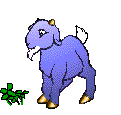|
Blue Print 35 (52%)
|
1.1 3 Count, read, and write whole numbers to 1,000 and identify the place value for each digit.
|
|
1.2 Use words, models, and expanded forms (e.g., 45 = 4 tens + 5) to represent numbers (to 1,000).
|

compare and rank

Key Standard
1.34 Order and compare whole numbers to 1,000 by using the symbols <, =, >.
|
|

inverse operations
2.0
Students estimate, calculate, and solve problems involving addition and subtraction of two- and three- digit numbers:
2.12.5
Understand and use the inverse relationship between addition and subtraction (e.g., an opposite number sentence for 8 + 6 = 14 is 14 − 6 = 8) to solve problems and check solutions.
|

add and subtract

Key Standard
2.24 Find the sum or difference of two whole numbers up to three digits long.
|
2.3 Use mental arithmetic to find the sum or difference of two two-digit numbers.
|
|
|
|
Blue Print 35 (52%)

multiply
3.0 Students model
and solve simple problems involving multiplication
and
division:
3.1 2 Use repeated addition, arrays, and counting by multiples to do multiplication.
|

Decimals, Fractions and Percents
4.0 Students understand
that fractions and
decimals may refer to
parts of a set and
parts of a whole:
4.13 Recognize, name, and compare unit fractions from 1/12 to ½.
4.2 Recognize fractions of a whole and parts of a group (e.g., one-fourth of a pie, two-
thirds of 15 balls).
Know that when all fractional parts are included, such as four-fourths, the result is
equal to the whole and to one.
|

Money
4.3 Students model and solve problems by representing,
adding, and subtracting amounts of money:
5.1 Solve problems using combinations of coins and bills.
5.2 5.2
Know and use the decimal notation and the dollar and cent symbols for money
|
|
|
|
Blue Print 6 ( 9%)

Key Standard
1.14 Use the commutative and associative rules to simplify mental calculations and to
check results.
|
|

Solving Equations
1.21 Relate problem situations to number sentences involving addition and subtraction.
|
1.31 Solve addition and subtraction problems by using data from simple charts, picture
graphs, and number sentences.
|
|
|
|
1.11 Measure the length of objects by iterating (repeating) a nonstandard or standard unit.
1.21Use different units to measure the same object and predict whether the measure will be greater or smaller when a different unit is used.
1.33 Measure the length of an object to the nearest inch and/or centimeter.
|

Time
1.42 Tell time to the nearest quarter hour and know relationships of time (e.g., minutes in an hour, days in a month, weeks in a year).

Time
1.51 Determine the duration of intervals of time in hours (e.g., 11:00 a.m. to 4:00 p.m.).
|

Shapes
2.13 Describe and classify plane and solid geometric shapes (e.g., circle, triangle, square, rectangle, sphere, pyramid, cube, rectangular prism) according to the number and shape of faces, edges, and vertices.

Shapes
2.23 Put shapes together and take them apart to form other shapes (e.g., two congruent right triangles can be arranged to form a rectangle).
|
|
|

Properties

Key Standard
1.14 Use the commutative and associative rules to simplify mental calculations and to check results. |
|
|

Charts, Data,
Function Tables and Graphs
1.21 Represent the same data set in more than one way (e.g., bar graphs and charts with tallies).
1.31 Identify features of data sets (range and mode).
1.41 Ask and answer simple questions related to data representations.
|
|
|
|
1.1 Determine the approach, materials, and strategies to be used.
1.2 Use tools, such as manipulatives or sketches, to model problems.
2.0 Students solve problems and justify their reasoning:
2.1 Explain the reasoning used and justify the procedures selected.
2.2Make precise calculations and check the validity of the results from the context
of the problem.
3.0 Students note connections between one problem and another. |
|